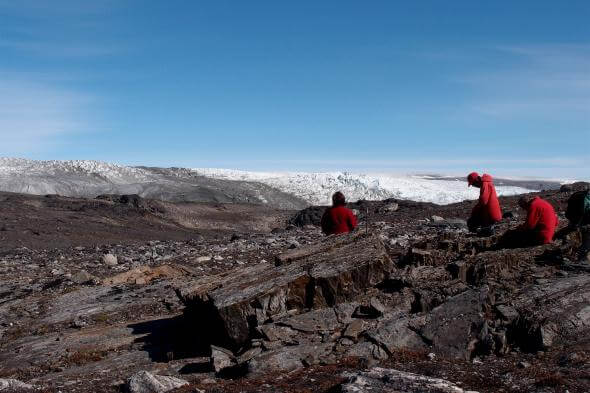- Get link
- X
- Other Apps

Earlier this week, scientists announced the discovery of the oldest fossils of all that we found - these are about 3.7 billion years old. They push back the time of the birth of life on Earth even 220 million years ago. The remains of ancient microbes were discovered in Greenland after the ice melted. You do remember that our planet is gradually getting warmer.
Fossils, known as stromatolites, indicate the existence of ancient water-based bacterial colonies, which have cemented sediments together with characteristic layers of carbonate. Prior to this discovery, the oldest known fossils were 3.48 billion-year-old stromatolites found in Western Australia.
In a paper published in Nature, scientists under the guidance of Professor Allen Natman from the University of Wollongon described themselves as finding fossils in the world's oldest sedimentary rocks in the Isaua greenstone belt, along the edge of the Greenland ice cap.
Co-author Martin Van Kranendonk, director of the Australian Center for Astrobiology, says that the recently discovered outcrops in Greenland provided a unique opportunity to find these fossils.
“They point to the rapid emergence of life on Earth and speak in support of the search for life in such ancient rocks on Mars,” says Van Kranendonk.
This week’s discovery reminded scientists of the rich treasure of ancient secrets that are likely to come out as glaciers melt, permafrost and sea ice in a warming climate.
In September 2012, an 11-year-old boy in the Taimyr Peninsula came across well-preserved mammoth remains: his limbs protruded from the thawed soil. In fact, along with the warming of the north, so many bones and tusks of mammoths opened up that collectors from all over the world went looking for precious remains.

Archaeologists are looking for a glacial man in the Arctic and on the mountains. The bodies of ancient people can be found in European swamps. Ship wrecks can become more accessible. Actually, this happened last September, when two lost whaling ships were found in the Arctic off the coast of Alaska. It would have been impossible to make such a discovery if it were not for the unusual absence of sea ice, which allowed the expedition to take place.
New technologies allow scientists to make the best map of what is under the ice of Greenland, and discover new food for science. Everything is changing rapidly, since in 2015 the melting of the ice reached a record pace.
Oddly enough, global warming, which allows us to extract ancient treasures from the depths, also threatens to turn many of today's living creatures into fossils. A recent study showed that if we continue to burn all our fossil fuels, the Earth will be 8 degrees warmer by the year 2300 and will return to a climate that was 52 million years ago. The average temperature in the Arctic will rise by 17 degrees. However, it took only 6 degrees to get the world out of the last ice age. In other words, by the year 2300, it may be so warm on Earth that palm trees will grow in Alaska, and crocodiles will swim in the Arctic Ocean.
The article is based on materials .
- Get link
- X
- Other Apps
Comments
Post a Comment